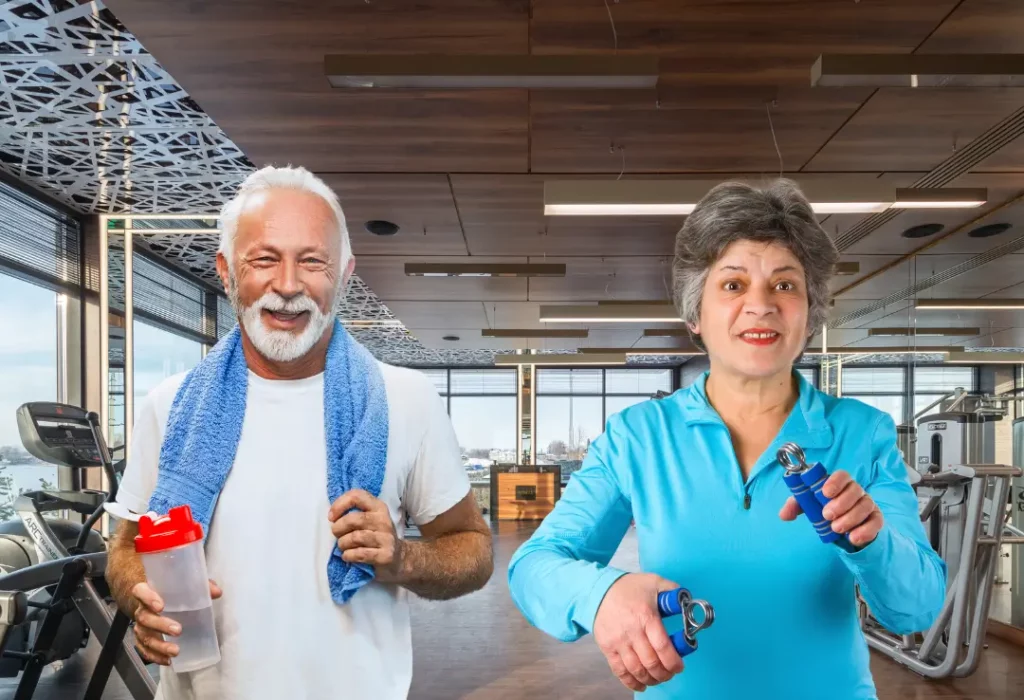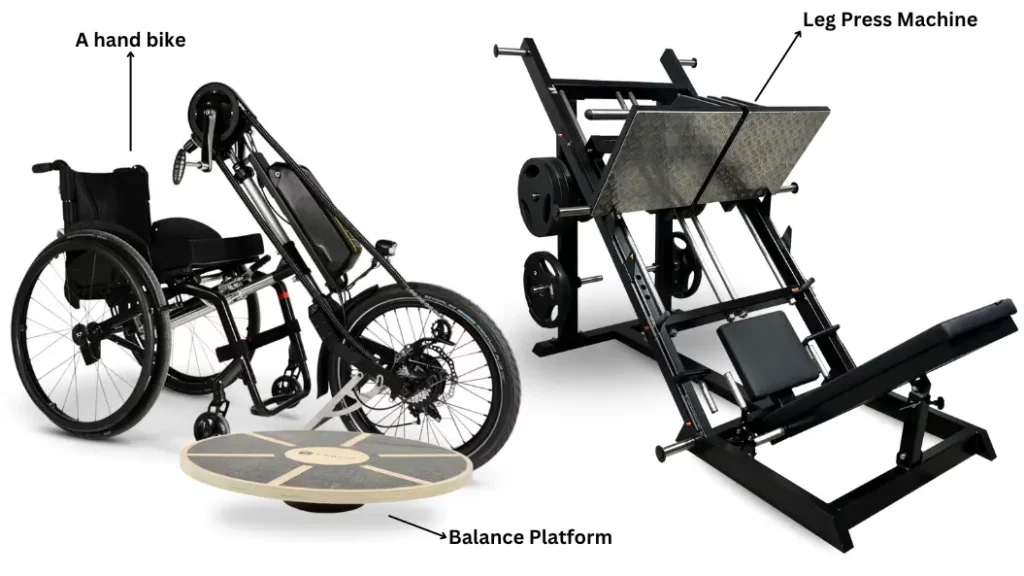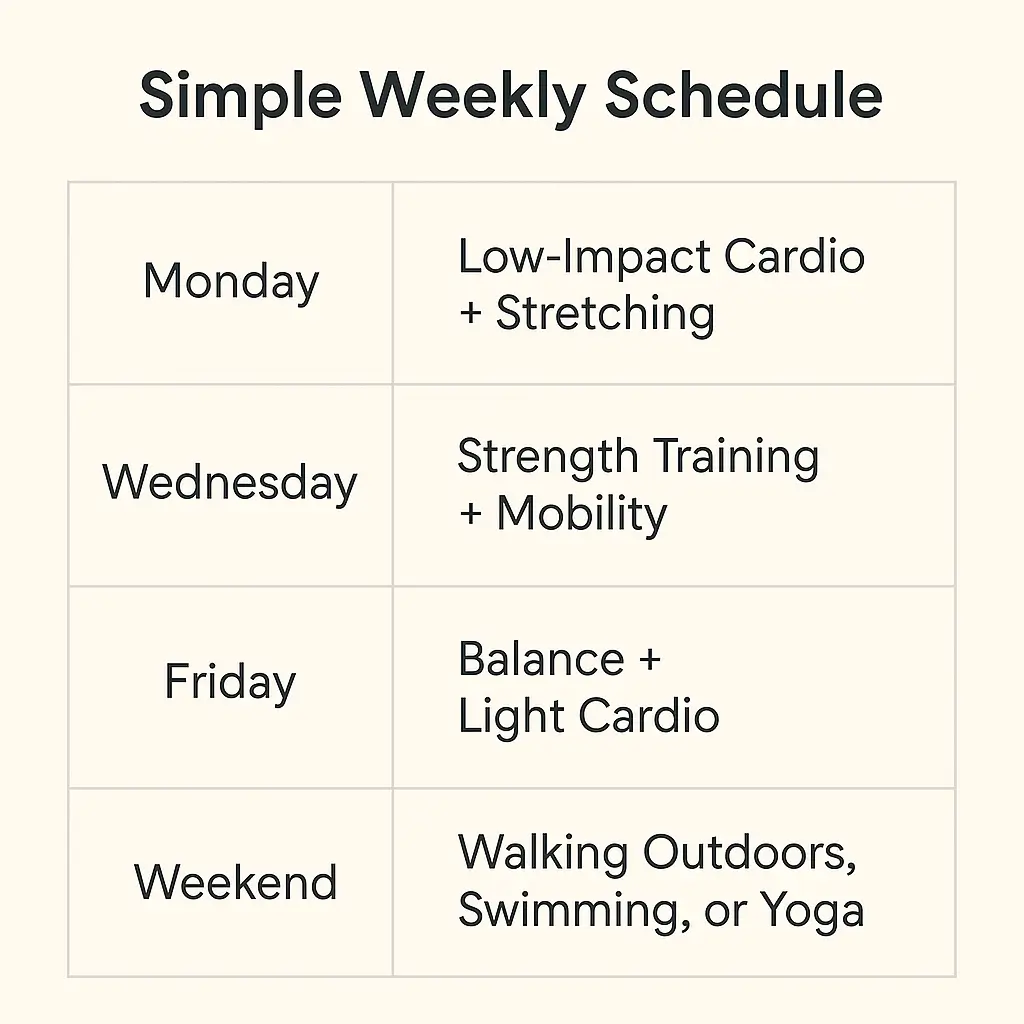Other posts
As we age, our bodies change—but the need to move never goes away.
Staying active becomes even more important. Movement keeps our muscles strong, our joints mobile, and our minds sharp. But here’s the truth: most gyms and fitness programs aren’t built with seniors in mind.
Picture this: a 70-year-old walks into a gym with high-impact machines, fast-paced classes, and one-size-fits-all routines. It’s overwhelming—and sometimes dangerous. That’s where tailored exercise programs for older adults come in.
These programs are carefully designed for the real needs of aging bodies. They focus on safety, flexibility, and function—not just fitness. And when paired with senior-specific equipment, they can dramatically improve balance, strength, confidence, and quality of life.
At Gym Factory, we believe fitness should feel good at any age. That’s why we build machines that support healthy aging—whether in a rehab clinic, a public gym, or right at home.
This guide explores how personalized workouts and the right equipment are changing the way older adults stay active—and why it matters now more than ever.

Getting older doesn’t mean giving up on movement—it means choosing the right kind.
Regular exercise after 60 isn’t just about staying in shape. It’s about protecting independence, preventing illness, and enjoying daily life with more energy and less pain.
Research from organizations like the World Health Organization shows that seniors who stay active are less likely to suffer from heart disease, diabetes, depression, and cognitive decline. Just 150 minutes of moderate activity per weekcan lead to longer, healthier lives.
On the flip side, inactivity accelerates aging. Muscles shrink, bones weaken, balance fades, and everyday tasks become harder than they should be. Without movement, independence slips away faster than most people realize.
The benefits of exercise for seniors go far beyond the body. A walk in the morning, a gentle strength workout, or a stretch session before bed can boost mood, sharpen memory, and improve sleep.The goal isn’t to push harder. It’s to move smarter. And that’s exactly what healthy aging and fitness are all about.
Most gym programs are built for the masses. But older adults aren’t just smaller versions of younger people—they need more personalized care.
Generic fitness routines can be ineffective—or even harmful—for seniors. They often ignore the very real challenges that come with age: joint stiffness, limited flexibility, reduced stamina, and past injuries. What works for a 30-year-old can put a 70-year-old at serious risk.
That’s where personalized workout plans for older adults come in. These programs don’t just copy-paste exercises—they adapt them to the person. Whether someone has arthritis, is recovering from surgery, or hasn’t moved in a while, an adaptive plan takes their starting point seriously.
Adaptive exercise programs are built with intention. They may include machines with adjustable resistance, exercises that avoid high-impact stress, or routines focused more on balance than brute strength.
More importantly, they evolve. As someone gets stronger, the plan grows with them—always challenging, but never overwhelming.
It’s not about doing less. It’s about doing what works.
Not all gym equipment is built with aging bodies in mind.
For older adults, traditional machines can feel intimidating—or even dangerous. High step-up heights, jerky resistance changes, and a lack of support features make many standard setups unsuitable. That’s where senior-friendly gym equipment comes in.
The best machines for elderly fitness are designed with safety, ease of use, and comfort at the core. Key features include:

Examples include:
Companies like Gym Factory are leading innovation in this space—crafting adaptive fitness machines for seniors that can be used in public gyms, rehabilitation centers, and even home setups. Every machine is tailored with older adults in mind, blending performance with protection.
For seniors, that can mean the difference between fear and freedom in the gym.
A good workout doesn’t have to leave you breathless. For older adults, the most effective routines are not about intensity—they’re about consistency, balance, and safety.
A well-designed senior fitness program should be more than just movement—it should be a blueprint for long-term health.
At its core, a smart routine blends four key elements: cardiovascular health, strength, flexibility, and balance. But the way these are combined should depend on the person. What works for an active 65-year-old might overwhelm someone recovering from surgery at 78.
For example, low-impact cardio like walking on a recumbent treadmill or pedaling a hand bike helps improve heart health without straining the joints.
Strength training, done with adjustable-resistance machines, helps maintain muscle and bone density—two things that naturally decline with age. Even 20 minutes, twice a week, can make a noticeable difference.
Flexibility and mobility work are just as crucial. Tight muscles and stiff joints often lead to falls and injuries. Stretching routines and gentle mobility drills restore range of motion and make everyday movements—like reaching, bending, or turning easier and safer.
Then there’s balance. Often overlooked, it’s the foundation of independence. Exercises that challenge stability, like standing on one leg or using a balance platform, help train the nervous system and prevent falls.
Here’s what a simple weekly schedule might look like:

Everything can be adapted. For someone with arthritis, resistance loads can be lowered. If osteoporosis is a concern, spine-safe movements take priority. Tailoring each element ensures safety, comfort, and steady progress.
Working with professionals or using senior-specific equipment—like the machines offered by Gym Factory—can make the entire experience smoother and more effective. It’s not just about staying fit. It’s about building a lifestyle that supports independence and vitality, year after year.
A well-designed fitness plan is only as good as the environment it’s used in. For older adults, comfort and accessibility matter just as much as the exercise itself. That’s why tailored fitness programs—and the specialized equipment that supports them—are now being used in various settings.
In public gyms, more and more facilities are carving out space specifically for seniors. These areas are quieter, safer, and equipped with machines that reduce joint strain and improve stability. Senior fitness centers often offer supervised sessions, giving users the confidence to exercise without fear of injury.
In rehabilitation centers, custom machines are essential. Whether someone is recovering from a stroke, joint replacement, or long-term inactivity, rehab gyms rely on equipment that can be adjusted to individual needs—support handles, slow-motion resistance, and low starting loads are critical features.
But fitness doesn’t need to happen in a facility. Home gyms for seniors are becoming more common—compact, quiet, and easy to use. A basic setup might include a seated bike, resistance bands, and a compact strength machine with safety features.
The goal in all these spaces is the same: make fitness safe, simple, and sustainable.
That’s why brands like Gym Factory are designing machines that adapt to the user—not the other way around. Whether installed in a busy gym or a small apartment, the right equipment makes movement not just possible—but enjoyable.
When seniors can train where they feel most comfortable, they’re more likely to stay consistent—and that’s what builds real, lasting change.
Aging doesn’t mean slowing down—it means training smarter.
With the right approach, seniors can stay strong, balanced, and independent for years. But that takes more than motivation. It takes custom fitness programs, senior-focused workout equipment, and a supportive environment that evolves with their needs.
From public gyms to rehab clinics to home setups, tailored programs are proving that healthy aging is not just a goal—it’sa strategy. And it starts with equipment built specifically for older adults.
At Gym Factory, movement should be safe, empowering, and accessible at any age. Our mission is to design solutions that help seniors train without fear—and with freedom.
Customer service
JOIN OUR NEWSLETTER